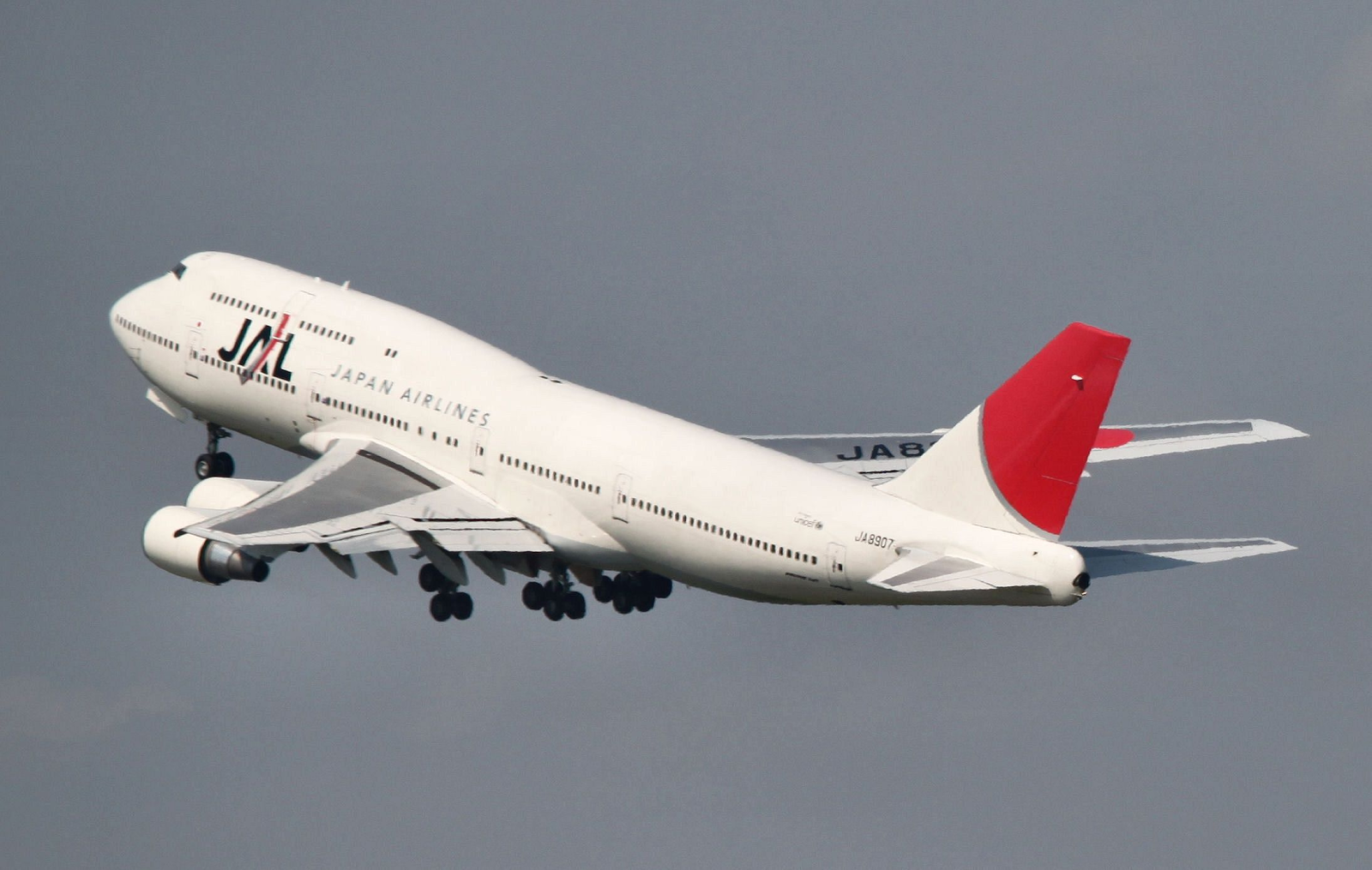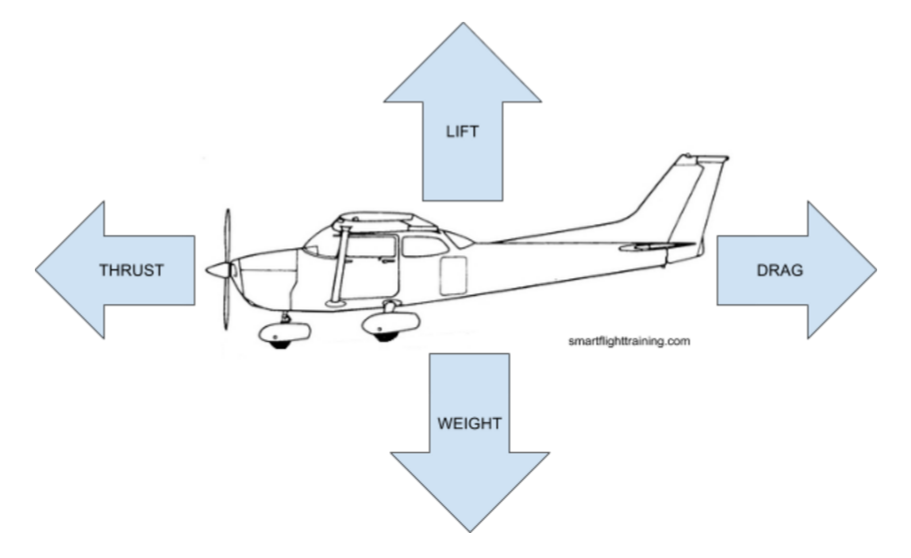How exactly DOES an airplane fly? How is it possible for a jumbo jet weighing hundreds of tons to actually lift of the ground and fly through the air?
First, it is important to understand that anything that flies through the air, from the jumbo jet we were just talking about to the small airplane you will fly for your training, to the frisbee or the paper airplane you threw as a kid (or just earlier today, you rascal), all have the same four forces acting on them allowing them to fly.
Those four forces of flight are: lift, thrust, drag, and weight (or gravity).
And here is what the four forces of flight look like in relation to each other and an airplane:
Lift
Lift is generated by the wings, and opposes weight / gravity. When lift is greater than weight, the airplane climbs. When lift is less than weight, the airplane descends. When lift and weight are equal, the airplane maintains its altitude.
Lift is always generated perpendicular to the wings (so in a turn, lift actually “pulls” sideways as the airplane banks, and in a climb, lift actually “pulls” backwards slightly, since the nose is pointed upwards somewhat). In this way, lift actually contributes to drag (see induced drag).
Thrust
On your training airplane, thrust is generated by the propeller, which is turned by the powerplant. Thrust moves the airplane forward through the air, and it opposes drag. When thrust is greater than drag, the airplane accelerates. When drag is greater than thrust, the airplane decelerates / slows down. When thrust and drag are equal, the aircraft maintains its airspeed.
Thrust / Lift cooperation
Lift is often given credit for making an airplane fly; however, technically, no lift would be generated without thrust to move the airplane through the air. So in reality, excess thrust is actually what makes an airplane fly, because without that thrust, no lift would ever be generated in the first place!
Weight
Weight is simply how much the airplane weighs. Sometimes this force is referred to as gravity, since gravity pulls down on the plane in relation to its weight. Weight opposes lift. An airplane must create more lift than weight to climb to higher altitudes.
Weight always pulls down directly toward the ground – unlike lift, which can change direction as the airplane pitches (nose up / nose down) or rolls (“banks” (leans) left or right). This concept will be important when you start to learn about aerodynamics in turns, so keep this in mind!
Drag
Drag is, quite simply, a force that opposes thrust. As an airplane moves through the air, there is friction from the air itself running into the aircraft.
There are two types of drag you need to be aware of:
- Parasite Drag: also known as “form” drag. Parasite drag is simply the air “running into” parts of the airplane. Parts like antennas, rivets, tires, the windscreen, your arm sticking out the window, anything and everything that the winds “hits” causes parasite drag.
- Induced Drag: This type of drag is a little harder to wrap your head around, but it is simply drag caused as a result of the creation of lift. Remember above, when I said that lift is created perpendicular to the wings? Well, the wings are never really “flat” against the wind, so the lift vector is always pointed slightly to the back of the aircraft. That “backwards” lift is induced drag. The more lift being created, the more drag is created.
While drag opposes thrust, you should know and understand that it does not EXACTLY oppose thrust. Just as weight always points directly down toward the ground, regardless of the airplane’s attitude, drag is always opposite to the airplane’s flight path. The flight path is rarely the same as where the nose is actually pointed. For example, in a climb, thrust points directly where the nose is pointing, but the aircraft is not climbing directly where the nose is pointing; it is actually “mushing” into the air somewhat, which means drag is offset slightly “above” the thrust vector. This can be difficult to imagine, so see the below image of the 4 vectors during an aircraft’s climb (exaggerated):
In conclusion, and to circle back around to the initial question: “How is it possible for a jumbo jet to actually lift of the ground and fly through the air?”
Any airplane will fly if its thrust exceeds its drag, and its lift exceeds its weight. If the four engines on a Boeing 747, producing a total thrust of more than 250,000 pounds, can exceed the drag the aircraft produces, and its 196 foot long wings can produce enough lift to exceed its weight (maximum 970,000 pounds), it can fly!



That’s good to know that lift is generated by the shape of the wins. That’s cool that they can create a difference in air pressure big enough to lift a massive pane off the ground. I am thinking about learning to fly, so it’s cool to know the physics of how flying works.